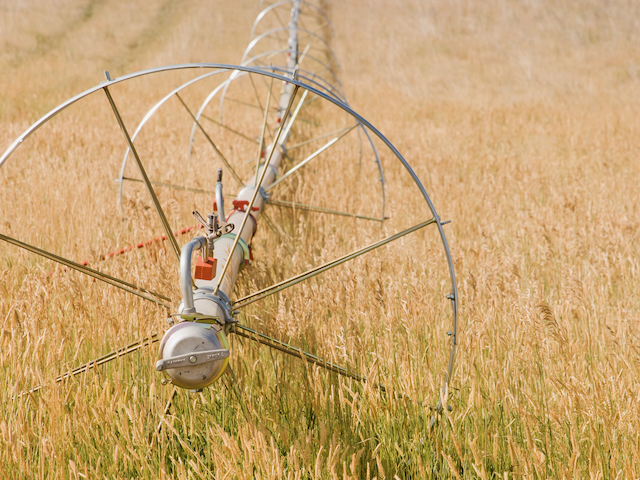Deficit Irrigation: Navigating Drought Challenges for Growers
Strategies and Benefits in the Face of Water Scarcity
Key Takeaways
- Deficit irrigation can be a valuable strategy for growers facing water scarcity.
- Precision agriculture techniques, including aerial imaging, play a crucial role in optimizing deficit irrigation.
- By carefully managing water resources, growers can maintain crop quality and sustainability.

Introduction
Water scarcity is an ever-looming challenge for growers worldwide. As climate change intensifies, droughts become more frequent and severe, putting agricultural productivity at risk. In this article, we explore the concept of deficit irrigation and how it offers a welcome upside for growers grappling with water shortages.
The Power of Deficit Irrigation
Understanding Deficit Irrigation
Deficit irrigation is a strategic approach where crops receive less water than they ideally require throughout their growth cycle. While it may seem counterintuitive, this technique offers several advantages in water-scarce regions.
-
Water Conservation: By intentionally limiting water application, growers conserve this precious resource, ensuring its availability for essential crop stages.
-
Stress-Induced Benefits: Controlled water stress can lead to positive outcomes, such as smaller but more concentrated fruit, improved fruit color, and enhanced flavor in some crops.
-
Sustainability: Deficit irrigation aligns with sustainable farming practices by reducing water use and minimizing environmental impacts.
Precision Agriculture and Aerial Imaging
To effectively implement deficit irrigation, growers rely on precision agriculture technologies, including aerial imaging. Aerial imaging provides crucial insights into crop health, moisture levels, and stress indicators.
Aerial imagery, captured by drones or satellites, allows growers to monitor their fields with unprecedented detail. This real-time data empowers growers to make informed decisions about when and where to apply water resources most efficiently.
Strategies for Successful Deficit Irrigation
Crop Selection
Not all crops respond the same way to deficit irrigation. Some crops, like wine grapes and olives, can benefit from controlled stress, leading to desirable quality attributes. Others, like lettuce or rice, may be less tolerant of water deficits. Growers must carefully select crops and varieties suited to deficit irrigation practices.
Monitoring and Data Analysis
A crucial aspect of deficit irrigation is continuous monitoring and data analysis. Soil moisture sensors and aerial imaging technologies provide the data needed to make informed decisions about irrigation timing and volume.
Dynamic Adjustments
Deficit irrigation is not a one-size-fits-all approach. Growers must be prepared to adjust their irrigation strategies based on changing weather conditions, crop development stages, and available water resources. Precision agriculture tools provide the necessary flexibility to adapt to these variables.
Benefits Beyond Water Conservation
Enhanced Crop Quality
One of the remarkable outcomes of deficit irrigation is the potential for improved crop quality. In many cases, controlled water stress can lead to more concentrated flavors, richer colors, and even enhanced nutritional value. For example, in the wine industry, deficit irrigation is employed to produce grapes with higher sugar content, contributing to the production of premium wines.
Sustainable Farming
Deficit irrigation aligns with sustainable farming practices by minimizing water waste and reducing the environmental footprint of agriculture. This approach demonstrates a commitment to responsible resource management.
Economic Viability
By optimizing water use and potentially improving crop quality, growers can maintain or even increase their economic viability in the face of water scarcity. High-quality produce often commands premium prices in the market, offsetting any reduction in yield.
Conclusion
Deficit irrigation is a valuable strategy for growers navigating the challenges of water scarcity. By leveraging precision agriculture techniques, including aerial imaging, growers can successfully implement and manage deficit irrigation practices. The benefits extend beyond water conservation, encompassing enhanced crop quality, sustainability, and economic viability.
As water scarcity continues to impact agriculture, deficit irrigation emerges as a promising solution, ensuring that growers can adapt and thrive in an ever-changing environment. The integration of technology and innovative farming practices paves the way for a more resilient and sustainable agricultural future.
One Kappa Eagle Eye
Unlock the power of precise imagery with Eagle Eye! Access low-cost ultra-high resolution imagery through our user-friendly web application.
Get Imagery